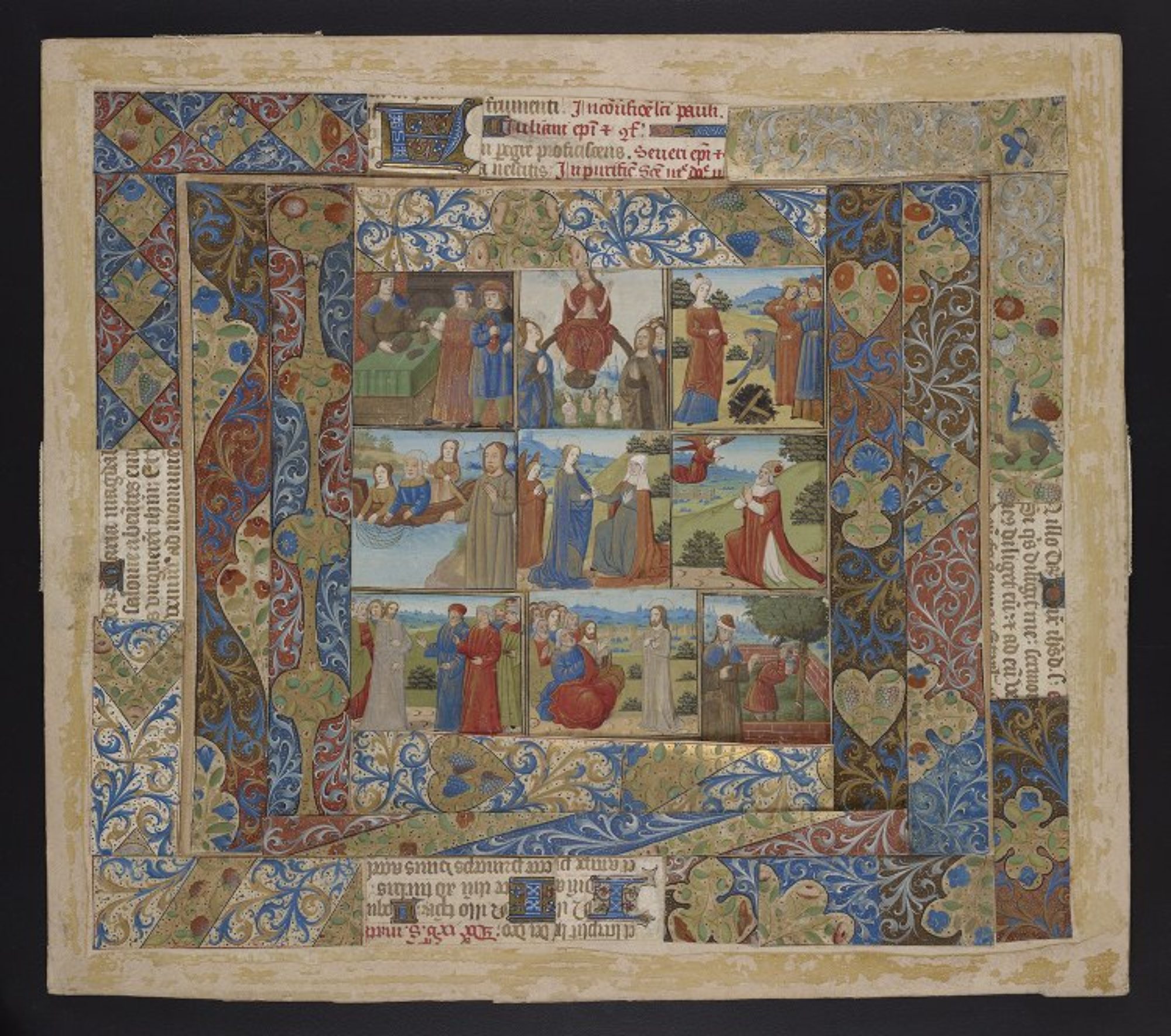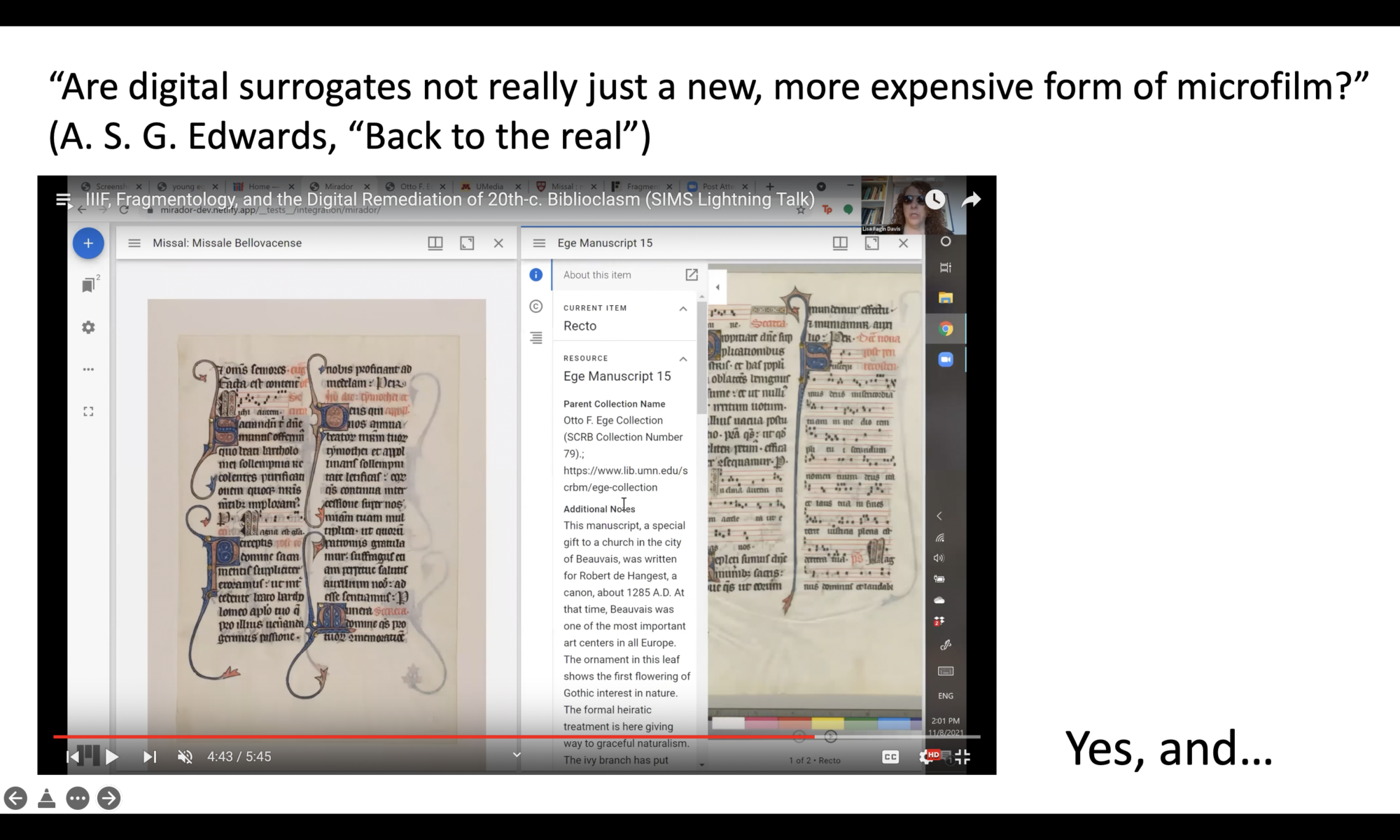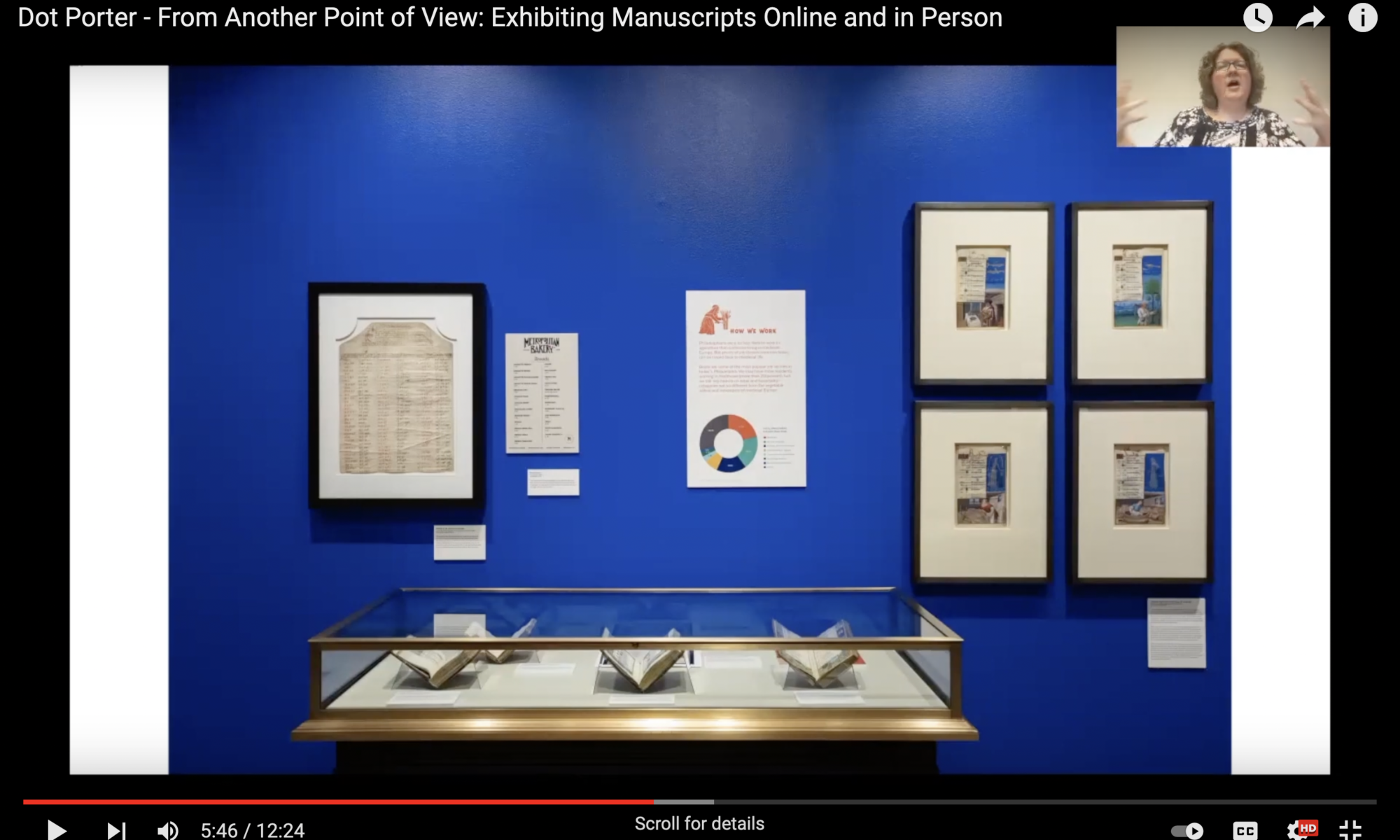Originally presented at the 14th Annual Schoenberg Symposium on Manuscript Studies in the Digital Age, November 17, 2021
Continue reading “Manuscript Loss in Digital Contexts”From Another Point of View: Exhibiting Manuscripts Online and in Person
I recorded this brief presentation in September 2021, as part of “the digital medieval manuscript: an expert meeting,” organized by Kathryn Rudy at the University of Saint Andrews and held virtually on October 8, 2021.
Continue reading “From Another Point of View: Exhibiting Manuscripts Online and in Person”

